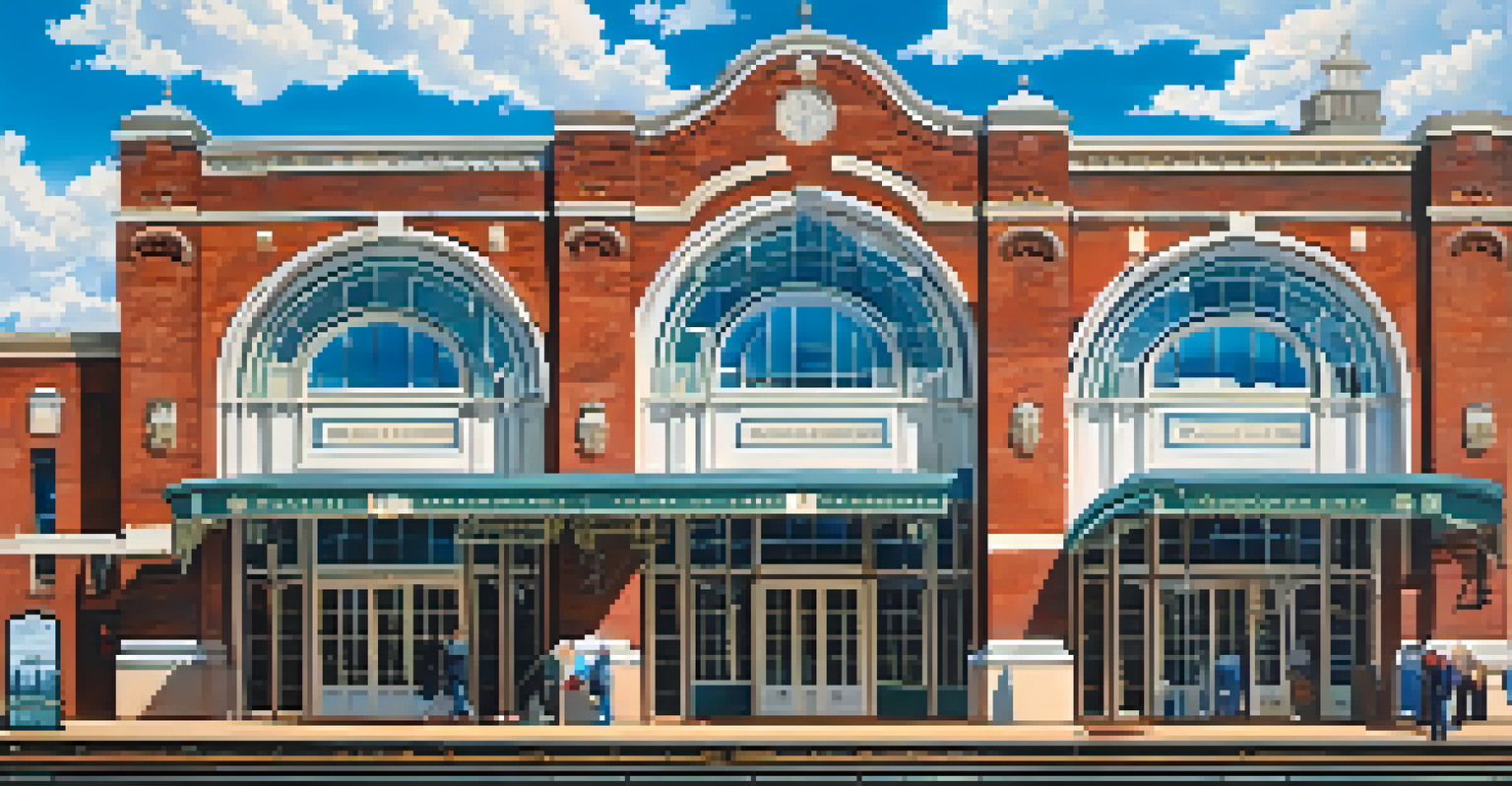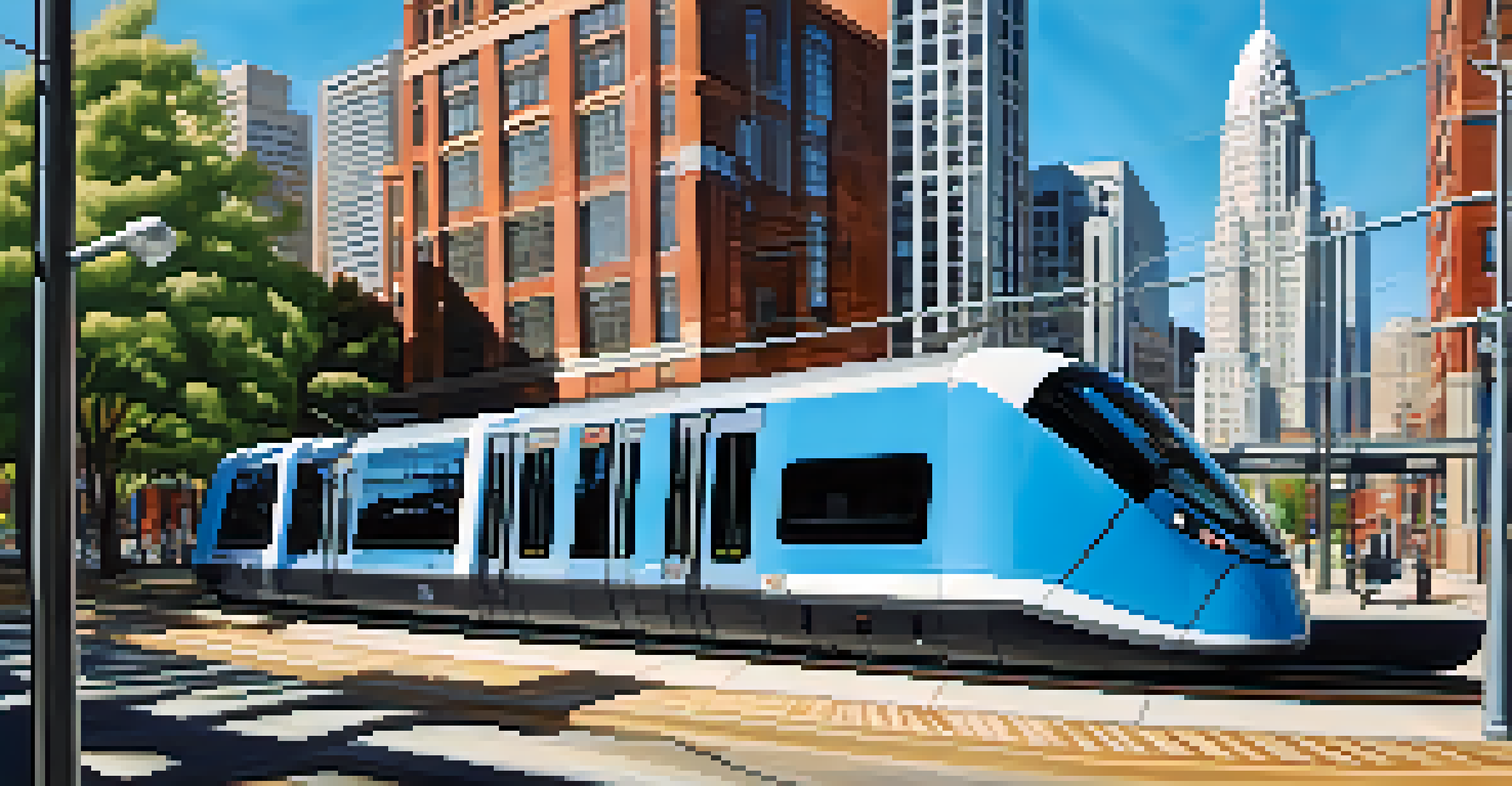Historic Rail Lines: Connecting Charlotte to the South

The Birth of Railroads in Charlotte: A Historical Overview
Railroads began to shape the landscape of Charlotte in the mid-19th century. The arrival of the North Carolina Railroad in 1856 was a pivotal moment, connecting the city to vital markets and resources. This development not only transformed transportation but also fueled economic growth, attracting businesses and settlers alike.
The railroads are a vital part of America’s past, present, and future, connecting communities and commerce like no other infrastructure can.
As trains chugged through the Carolinas, they did more than just carry goods; they fostered a sense of community. Families could visit relatives in nearby towns, while farmers gained access to wider markets for their produce. The railroads became a lifeline, knitting together the fabric of Southern life.
Today, remnants of this rich history can still be seen in Charlotte's rail infrastructure. Historic depots and stations stand as testaments to an era when trains were the primary mode of travel. Understanding this history offers a glimpse into how railroads shaped not only Charlotte but the entire Southern region.
Economic Impact: Railroads as Catalysts for Growth
The economic implications of railroads in Charlotte were profound. They enabled the efficient movement of goods, which in turn stimulated local industries such as textiles and agriculture. This connectivity allowed Charlotte to evolve into a commercial hub, attracting investment and talent.

Moreover, the railways opened up new markets for Southern farmers, making it easier to transport crops and livestock. This access was crucial during the post-Civil War recovery, as it helped re-establish the economy and improve living standards across the region.
Railroads Fuel Economic Growth
The arrival of railroads in Charlotte transformed it into a commercial hub, enabling efficient movement of goods and stimulating local industries.
Today, the legacy of this economic transformation is still visible. Charlotte is now a bustling metropolis, and its railroads continue to support trade and commerce, demonstrating the lasting impact of those early rail lines on the city’s growth and prosperity.
Cultural Connections: Railroads and Southern Identity
Railroads in the South did more than just connect places; they connected people. As trains traversed the landscape, they facilitated the exchange of ideas, traditions, and cultures. This melding of influences helped shape a unique Southern identity that is celebrated to this day.
Trains are a reminder that the journey is just as important as the destination, connecting us to the beauty of our land.
From music to cuisine, the railroads played a role in spreading cultural elements throughout the region. Travelers on trains often shared stories and experiences, contributing to a rich tapestry of Southern culture. The journey itself became a cultural experience, showcasing the local heritage along the way.
In Charlotte, this cultural exchange remains significant. Festivals and events often celebrate the city’s rail history, reminding residents and visitors alike of the vital role railroads played in crafting the Southern experience. The legacy of these connections continues to enrich the city’s vibrant cultural scene.
Innovation and Technology: Evolution of Rail Travel
The story of railroads is also one of innovation. Over the years, advancements in technology have transformed how trains operate and connect cities. From steam engines to diesel locomotives, each evolution brought improvements in speed and efficiency, enhancing the overall travel experience.
In Charlotte, modern rail systems incorporate cutting-edge technology, making commuting more convenient. Light rail services have emerged as an eco-friendly alternative, promoting sustainable urban transport while reducing traffic congestion. This shift reflects a commitment to progress and environmental responsibility.
Cultural Exchange Through Rail Travel
Railroads connected people and facilitated the exchange of ideas, shaping a unique Southern identity celebrated in Charlotte's vibrant culture.
As we look to the future, it’s clear that the spirit of innovation continues to thrive in Charlotte’s rail industry. The blend of historical significance and modern advancements illustrates how railroads remain a vital part of the city’s infrastructure and identity.
Scenic Journeys: Exploring Rail Lines Through the South
One of the joys of rail travel is the scenic beauty it offers. The routes from Charlotte to various Southern destinations provide breathtaking views of landscapes, mountains, and rivers. Travelers can enjoy the journey as much as the destination, making rail travel a truly immersive experience.
For instance, a train ride from Charlotte to the Blue Ridge Mountains reveals stunning vistas that are often missed by car travelers. The leisurely pace of the train allows passengers to relax and appreciate the natural beauty surrounding them, creating lasting memories along the way.
These scenic journeys not only highlight the allure of the South but also showcase the importance of preserving these routes. Many rail lines are now integrated into tourism efforts, encouraging visitors to experience the region's beauty and history through rail travel.
Community Revival: The Role of Rail in Urban Development
As cities evolve, the role of railroads in urban development becomes increasingly significant. In Charlotte, there has been a resurgence of interest in using rail lines as a means of revitalizing neighborhoods and improving accessibility. This trend emphasizes the importance of integrating rail systems into urban planning.
New developments often sprout around rail stations, promoting a walkable lifestyle and reducing reliance on cars. This not only enhances the quality of life for residents but also attracts businesses and investors looking to capitalize on the increased foot traffic and connectivity.
Preservation of Rail History
Efforts in Charlotte to maintain historic rail lines ensure that the significance of railroads is honored and passed on to future generations.
Moreover, the emphasis on community-oriented rail offers a glimpse into the future of urban transport. By prioritizing public transit options, Charlotte is fostering sustainable growth while honoring its rich rail heritage, creating a harmonious blend of past, present, and future.
Preserving History: Efforts to Maintain Historic Rail Lines
Preserving the history of railroads is crucial for future generations to understand their significance. In Charlotte, various organizations and historical societies work diligently to maintain and promote these historic rail lines. Their efforts ensure that the stories and legacies of the past are not forgotten.
These preservation initiatives often include restoring old train stations and creating museums dedicated to rail history. Community involvement plays a key role, with volunteers and enthusiasts often participating in events that celebrate the city's rail heritage.

By showcasing the importance of these historic rail lines, Charlotte not only honors its past but also inspires future generations to appreciate the impact of railroads on their community. The ongoing commitment to preservation reflects the city's values and dedication to its rich history.